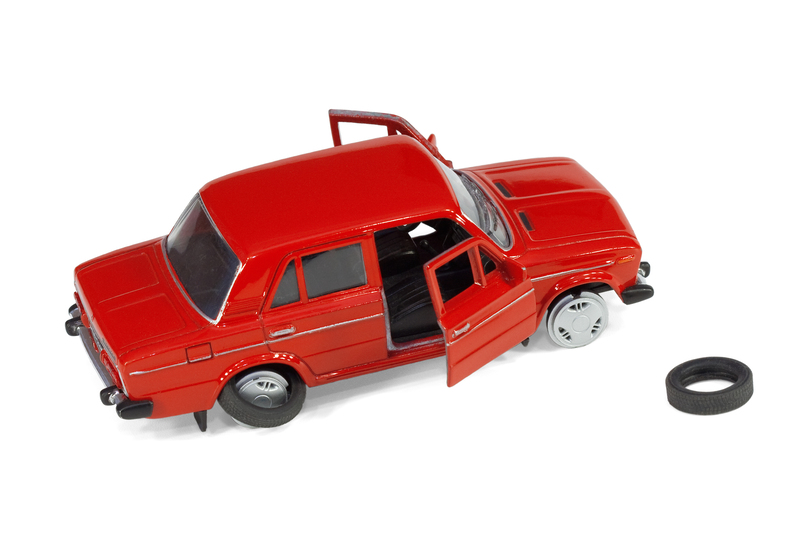Put a Creative Twist on Recycling with Upcycling Innovations
Today, the concept of recycling has evolved way beyond simply sorting glass, plastic, and paper at the curb. From inventive artists to resourceful entrepreneurs, there is a global movement reimagining what was once considered waste. This creative phenomenon is called upcycling--a bold approach that gives discarded materials a new lease on life with added value and unexpected function. In this comprehensive guide, we'll delve into the world of upcycling innovations and discover how you can put an original twist on traditional recycling for a more sustainable, inspiring tomorrow.
Understanding Upcycling: More Than Just Recycling
Recycling typically involves breaking down materials for repurposing, often resulting in products of lower quality. In contrast, upcycling transforms waste or unwanted items into products of higher value, utility, or aesthetic appeal. It's both an eco-friendly lifestyle choice and a springboard for creativity.
- Recycling: Material is reduced and reprocessed (e.g., melting plastics to create new plastic products).
- Upcycling: Materials are directly reused, enhanced, or redesigned into something new (e.g., turning wooden pallets into stylish furniture).
Why Choose Upcycling?
Choosing upcycling over conventional recycling can provide multiple benefits:
- Reduces landfill waste.
- Conserves natural resources and energy.
- Sparks innovation, creativity, and artistry.
- Creates unique, one-of-a-kind products.
- Promotes local economies and supports sustainable businesses.

The Most Innovative Upcycling Ideas & Trends
From fashion runways to urban development, upcycling trends are reshaping how we view waste. Here are some pioneering ways individuals and organizations are injecting creativity into the recycling process:
1. Upcycled Fashion: Turning Textiles into Trends
Sustainable fashion brands across the globe are upcycling waste textiles into chic, new garments. Unwanted clothing, leftover fabric, and even plastic bottles are reborn as:
- Eco-chic jackets made from old denim jeans
- Handbags crafted from seat belts and billboard vinyls
- Sneakers composed of ocean-recycled plastics
- Patchwork dresses using textile remnants
Example: Iconic brands like Patagonia and Stella McCartney integrate upcycled materials in their collections, reducing their environmental footprint while staying stylish.
2. Furniture & Home Decor: Transforming Trash into Treasure
Upcycling household waste is one of the most accessible and rewarding recycling innovations for homeowners. Common upcycled home projects include:
- Old ladders converted into rustic bookshelves
- Mason jars transformed into pendant lights or vases
- Wine corks reimagined as bath mats or trivets
- Vintage suitcases repurposed into stylish side tables or pet beds
DIY upcycling not only reduces waste and clutter but also adds a personalized touch and story to your living space.
3. Upcycling in Art: From Discarded to Divine
Artists are at the forefront of the upcycling revolution, turning everyday castoffs into thought-provoking masterpieces. Examples include:
- Sculptures made from scrap metal and electronics
- Mosaics created from broken tiles and glass
- Street art murals that incorporate recycled materials
This movement not only showcases creativity but also raises awareness about environmental issues in a visually impactful way.
4. Upcycled Architecture: Buildings with Sustainable Bones
Architects and builders are exploring upcycling as a solution to the growing waste crisis in the construction industry. Contemporary projects showcase:
- Shipping containers converted into modern homes or offices
- Pallet wood as reclaimed flooring or wall panels
- Glass bottles and tires used in eco-friendly wall construction
This form of innovative recycling not only lessens raw material needs but also adds unique character and eco-credibility to new developments.
5. Upcycled Tech: Giving Gadgets a Second Life
With e-waste becoming a pressing global issue, upcycling electronics is an innovative form of sustainable recycling. Popular projects include:
- Old smartphones transformed into security cameras or music players
- Computer parts upcycled into quirky clocks, lamps, or art pieces
- Worn headphones turned into wearable accessories
Tech upcycling not only reduces hazardous waste but also encourages people to think outside the (recycle) box.
How to Get Started with Upcycling at Home
Anyone can put a creative twist on recycling by starting small at home. Here's a guide to help you embark on your own upcycling journey:
1. Take Inventory of Your Waste
- Assess your daily trash - what do you commonly throw away?
- Identify items made from durable or unique materials.
2. Get Inspired
- Browse online platforms like Pinterest, Instagram, and YouTube for upcycling tutorials.
- Check out local upcycling workshops or community maker spaces.
3. Start Simple
- Repurpose glass jars for food storage or planters.
- Convert old t-shirts into reusable grocery bags or cleaning rags.
- Decorate tin cans as pen holders or lanterns.
4. Level Up Your Skills
- Learn basic woodworking or sewing techniques.
- Experiment with painting, stenciling, or collage art.
- Collaborate with others to tackle larger DIY upcycling projects.
5. Share and Sell Your Creations
- Gift your upcycled items or sell them at local craft fairs or online marketplaces.
- Encourage others to adopt upcycling by sharing your process and tips on social media.
Spotlight: Game-Changing Upcycling Innovations from Around the World
Across continents, visionaries are turning upcycling into a force for positive change. Here are some standout examples of upcycling innovations shaking up their industries:
1. EcoBricks: Building with Bottles
In many countries, discarded plastic bottles are packed with non-biodegradable waste and used as "bricks" for constructing schools, benches, and even homes. This low-tech, low-cost method empowers communities to manage their own waste and build critical infrastructure.
2. Upcycled Plastic Roads
Companies in India, the Netherlands, and the UK are blending shredded plastic waste into asphalt, resulting in longer-lasting, more flexible roads. These upcycled roadways not only improve infrastructure but also tackle mounting plastic pollution.
3. Circular Fashion Initiatives
Brands like H&M and Levi's are collecting old clothing through in-store recycling programs. Garments are sorted; some are resold, others are upcycled into new textiles, shattering the linear "take-make-waste" model that dominates fashion today.
4. Upcycled Art Festivals
Events like the Recycled Art Festival in Vancouver and Upcycle Fest in Austin celebrate creativity by transforming urban waste into inspiring public installations and sculptures, proving that upcycling can also bring people together for education and entertainment.
The Environmental Impact: Why Upcycling Matters
Adopting upcycling innovations doesn't just tidy up your household--it can play a crucial role in tackling global environmental challenges. Here's how:
- Reduces landfill build-up: By reusing and upcycling, less trash ends up in overflowing dumps or incinerators.
- Conserves natural resources: Upcycling diminishes the demand for virgin materials like wood, metals, and oil-derived plastics.
- Cuts down on pollution: Less manufacturing means fewer greenhouse gas emissions, chemical leaching, and water usage.
- Promotes creative, circular economies: By valuing waste, new business models and job opportunities emerge for artisans, engineers, and entrepreneurs.
Tips for Successful and Stylish Upcycling
Ready to add a fresh twist to your recycling routine with upcycling innovations? Here are a few expert tips:
- Think Function and Form: Upcycling works best when items are both useful and appealing. Ask yourself how the object can serve a new purpose.
- Choose Quality Materials: Durable waste (like glass, metals, hardwood) often upcycles better than flimsy or degraded plastics.
- Mix & Match: Combine different waste materials for eclectic results--try wood with metal, glass with textiles, or plastics with electronics.
- Personalize Your Projects: Paint, stencil, or decorate upcycled items to match your style and taste.
- Share Knowledge: Inspire others by displaying your creations or hosting workshops.

Upcycling for Businesses: Profiting from Waste
Entrepreneurs have a unique opportunity to harness upcycling as both a sustainability strategy and a business opportunity. Some successful business models include:
- Eco-friendly product lines: Jewelry from circuit boards, bags from seatbelts, or furniture from reclaimed wood.
- Custom upcycling services: Transforming customers' beloved, worn-out items into "new" keepsakes.
- Workshops and classes: Teaching others how to upcycle in fun, community-building settings.
- Corporate upcycling: Businesses reusing or redesigning office supplies, old signage, or uniforms in creative ways.
Note: Eco-savvy consumers increasingly support businesses that prioritize upcycled goods--tapping into this trend can boost brand reputation and customer loyalty.
Conclusion: The Future of Recycling Lies in Upcycling Innovations
With creativity, commitment, and a little bit of inspiration, upcycling innovation is turning waste into wonder--one bottle, one box, one broken appliance at a time. Not only does putting a creative twist on recycling reduce environmental impact, but it also unlocks new value, beauty, and meaning in everyday objects. Whether you experiment with a simple at-home project or support global upcycling enterprises, your choice can make waves in forging a cleaner, greener world. So upcycle your mindset, roll up your sleeves, and join the movement where sustainability meets imagination.
Embrace upcycling innovations today--for a world where nothing is wasted, but everything is reimagined.